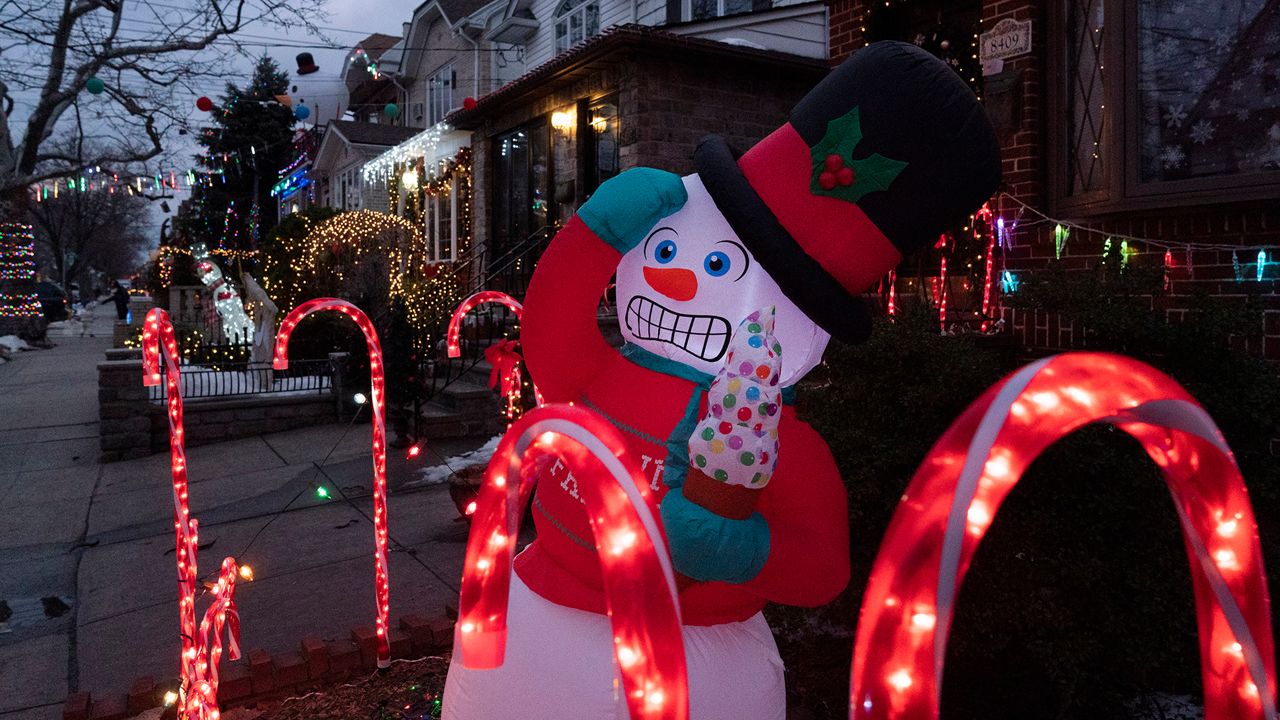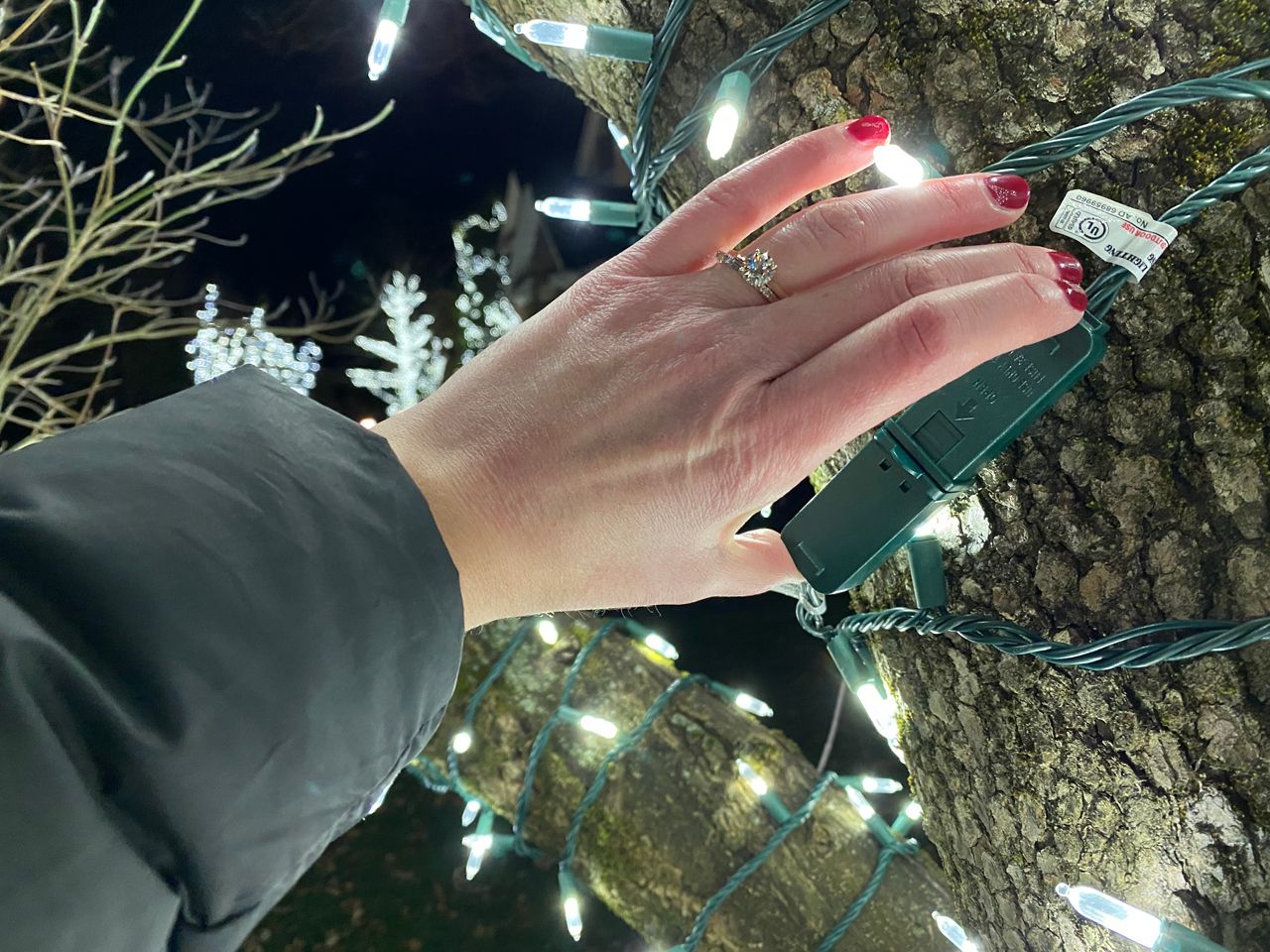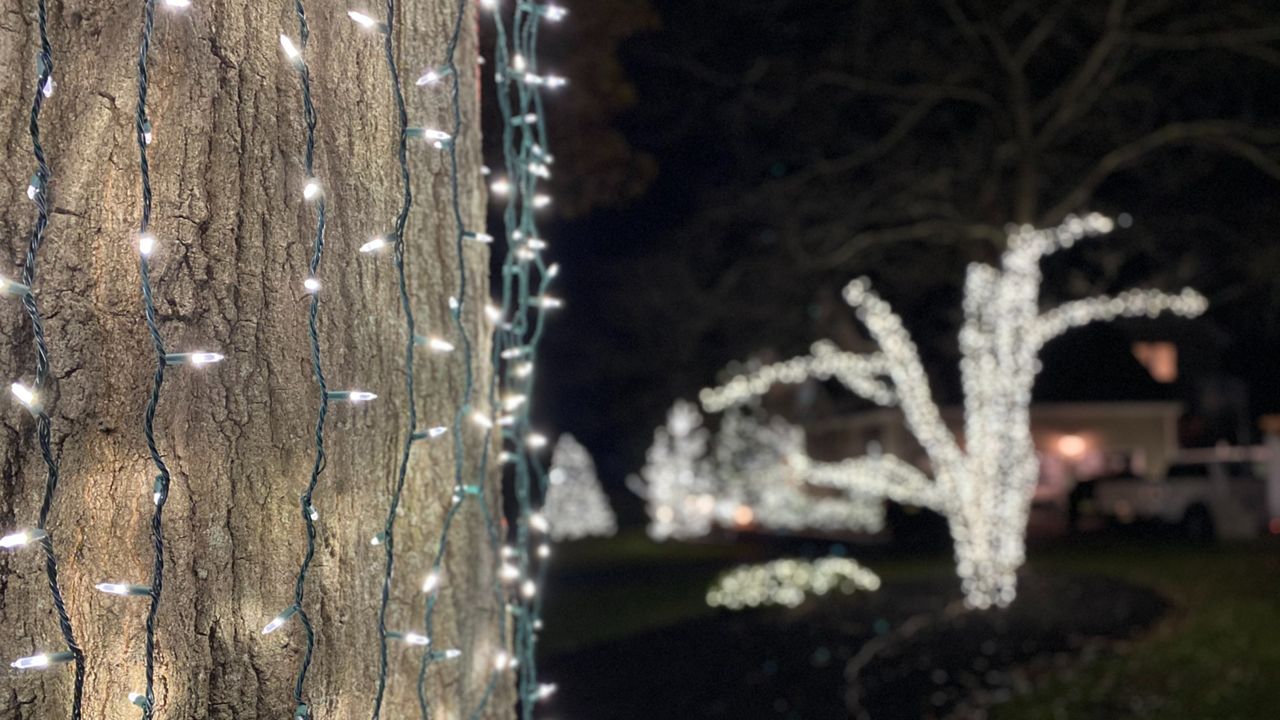Decking the halls indoors can be done comfortably in either rain or shine, but that’s not exactly true for those decorating outdoors. While the weather can make or break your decorating experience, it also can take a toll on your decor over time — some of which could lead to some serious safety hazards.
‘Tis the season to light up the night! Even though the days are getting shorter, the nights are becoming brighter as families gather to garnish their homes with lights and holiday decor.
Of course, each household has their own preferences regarding what they put out and when- all which could be influenced by the weather.
With that, there’s a few guidelines to keep in mind to assure you and your dwelling stay safe this season.
Putting up and taking down the outdoor decorations takes time, motivation and dedication. Along with making sure you have all the correct materials lined up, strategically planning when you put them up can bring you some more comfort — at least when it comes down to the weather.
Comfort aside, certain weather are even downright dangerous.
Even though most places across the country will notice a decline in temperatures in late November and early December, the chances for a cold outbreak only increase as the end of the year approaches. This primarily impacts decorators across the Northern U.S.
Facing brutally cold temperatures for a period is not only uncomfortable, but could be dangerous if not properly dressed. Hence, when the forecast calls for dry, mild, or unseasonably warm conditions before Thanksgiving, many seize the opportunity to do their holiday due diligence.
In 2022, the first weekend of November brought record-warm temperatures across the eastern half of the country, making it a spectacular time to deck out the exterior of their dwellings. Many Midwesterners and Northeasterners took advantage of it, even though it was just after Halloween.
Justin Gehrts, Spectrum News Senior Digital Meteorologist and Producer, was one of the many. He claims, “Midwest weather, like some other places, can be pretty finicky in the late fall. I used to wait until close to Thanksgiving to do decorations, but mild days are too hard to come by at that point.”
In addition, Gehrts explains, “Trying to do some of the work with gloves or cold fingers or both isn’t worth it to me. If I have mild weather in early November to at least hang the lights on the roof, I’m going to do it.”
Temperatures raise little concern during the fall, but could be problematic as winter draws near, especially across the northern U.S.
Waiting until after Thanksgiving to illuminate your home isn’t such a big deal for those living in the South, but could impact Midwest and Northeast dwellers. Putting up and taking down the lights in frigid temperatures puts decorators at an increased risk for hypothermia, especially if not dressed properly.
While some people struggle to accept this, putting up the lights after Halloween isn’t such a bad idea, especially if you live in an area prone to colder temperatures and winter weather. Just as long as it isn’t too early.
Putting up and taking down the decorations is only half the battle, though. Decor put up during the winter months must withstand harsh weather, especially in the northern half of the country. Not only that, but winter weather also puts wear and tear on outdoor decorations.
Even weather-grated decor still faces limitations, especially when kept up past 90 days. Wind, rain and even prolonged exposure to the sun can all take a toll on your lit creation.

The U.S. Department of Energy (DOE) explains the physics behind holiday lights and how they work. In addition, the DOE also provides some helpful safety tips to keep in mind while decorating your home during the holidays.
Hanging the lights during the late summer or early fall and keeping them off until Black Friday may seem like an obvious solution, but over time, exposure to the elements can wear out the wiring inside your holiday lights, especially if kept off until after Thanksgiving.
According to Brian Caslin, my father and former electrician, “Moisture can build up inside the sockets, which could cause the wiring inside to corrode [when lights are left up unlit]. Refraining from putting the lights up too early and taking them down after New Year’s will prevent corrosion from happening.”
Caslin assures that this method isn’t a full guarantee your lights will illuminate all season long, though. Heavy rain or snow could be enough to leave your house in the dark, regardless.
He claims, “Water is a great conductor of electricity, so any areas where it can come into contact with live wiring could present a safety or shock hazard.” Because of this, we usually wire outside electrical receptacles with ground fault interrupters (GFI) circuit protectors.
Caslin explains that, “The GFI is more sensitive than standard circuit breakers, and will essentially ‘trip’ by turning off the power quickly.” Thus, heavy rain or wet snow could be the reason your holiday lights shut off.
Caslin cautions that if this happens, to always make sure all wiring and connectors are dry before resetting a tripped GFI.
While this may seem like the least of the evil, electrical shorts could lead to other hazardous outcomes — some which could be fatal. Besides becoming a fire hazard, shorted out wires could also put anyone who comes in contact with the power source at risk for electrocution when touched.
Since various homes don’t have many outdoor power outlets, extension cords are necessary for most homes. But you’ll need to keep some safety tips in mind with those, too.
All extension cords used should be graded for outdoors. In addition, the decorator should also make sure that there are no cracks in the insulation surrounding the live wires, as well as making sure that they are securely fastened together to avoid moisture from seeping in.

Wet weather during the winter months could also be an issue for inflatables, too. Inflatable decorations should be taken in when it is raining or snowing outside. If they are not taken in, they should be dried off thoroughly before getting inflated again.
Failing to do so on milder days doesn’t pose too much of a concern, per se. It’s when the temperatures drop below 32 degrees — wet inflatables (or those covered in a layer of snow for that matter) can freeze, which could lead to cracks and tears in the inflatable’s durable fabric.
This will prevent it from inflating correctly.
Along with precipitation, windy days are just as problematic for outdoor decor, especially for our inflatable friends mentioned above.
All inflatables should be mounted securely to the ground with stakes and ties. For additional stability, decorators should also place a sand bag inside the inflatable to prevent it from flying off the their property.
When wind speeds pick up and gusts exceed 25 mph, decorators should refrain from inflating altogether to avoid the chances of their inflatable becoming a projectile. If this occurs, the inflatable on the loose could damage you and your neighbor’s property, as well as cause damage to itself.

Not properly secured lights can also fall victim to the wind. Strong winds could loosen the connections between light strands and extension cords, increasing the potential for shocks and fires.
Technological advancements over the last several years brought improvements to the holiday lighting industry. Along with increased longevity, most holiday lights nowadays can also better withstand the outdoor elements.
Regardless, residents eager to put up holiday decorations outdoors should always follow the safety instructions provided with your decor and local electrical authorities.
Our team of meteorologists dives deep into the science of weather and breaks down timely weather data and information. To view more weather and climate stories, check out our weather blogs section.



